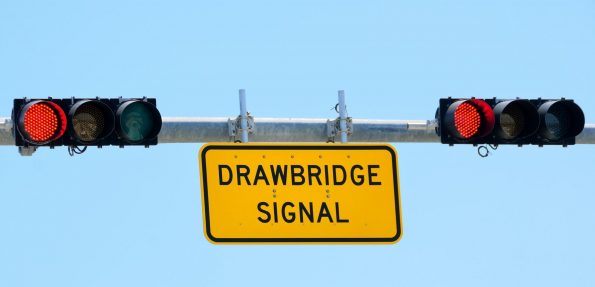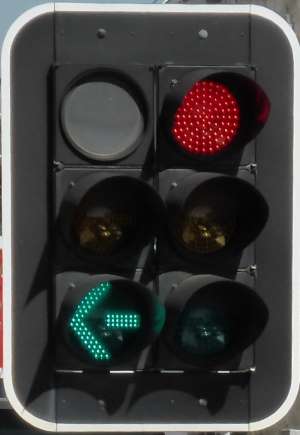This is a question that is mostly relevant to America, Canada and Japan because in the majority of the world, traffic lights are always vertical. If you’re driving around Australia, all our lights are vertically aligned, like the ones below.

There are four reasons why traffic lights are mounted horizontally:
- If lights have to be placed above a specific lane and there would be an issue with clearance, horizontal alignment gives extra room for vehicles to pass underneath.
- If the lights are to be visible when exiting a tunnel or other area of restricted vertical visibility, a horizontal light means that drivers see all three lights at the same time.
- In areas of high winds, horizontal lights above lanes will have more of their surface attached to the gantry which gives better stability and reduced wind resistance; in some American countries, lights are hung from cables and these will swing wildly in strong winds.
- Traffic engineers sometimes choose horizontal layouts if it’s more aesthetically pleasing.

Traffic lights laid out horizontally at the entrance to a drawbridge
Why are most traffic lights vertical?
Vertical traffic lights are used in the majority of countries. Reasons that vertical lights are used are:
- It’s a more well-known standard with red (stop) at the top and green (go) at the bottom, so it doesn’t matter if a driver is colour blind. Some horizontal lights in Canada use specifically shaped lights to get around this, but that just confuses tourists.
- When there are filter arrows, a vertical light is a more obvious layout as a green filter arrow to the right will be on the right of the light, whereas horizontally it will be placed underneath the red light if the red is on the right (left-hand drive countries). Then there are difficulties if you need multiple filter arrows.
- The red-amber-green sequence is reversed in countries that drive on the right vs the left, which makes it confusing for tourists.

Filter arrows are very confusing if you have a horizontal arrangement as one of the green filters will be underneath the red.
